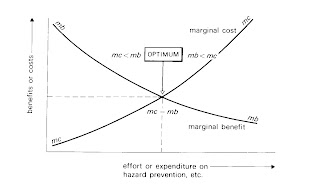Tuesday, December 30, 2008
SUSTAINABLE PLANNING AND DESIGN HAS A POSITIVE COST BENEFIT - Non-sustainable development assumes that it is too expensive to factor in the impacts of development on the natural environment and the livability of the overall community. Experience in the development of planned communities such as Reston, Virginia and the sustainable re-development of downtowns such as Portland, Oregon shows, however, that property values go up with sustainable development. People and businesses eventually flee unsustainable communities. Also, experience shows that ultimately unsustainable development costs more. Unsustainable buildings become out-dated as energy costs rise while residents in cities that have allowed unlimited sprawl pay more for traffic congestion and the costs of commuting. Ultimately, air pollution regulations might prevent all new development in cities that have air pollution levels that exceed standards, preventing the economic growth of such cities.
NON-SUSTAINABLE CITY/URBAN CENTER - Below is an example of a non-sustainable city or urban center. Note both that the built environment has totally overtaken the natural environment and that humans have to escape within the buildings as it takes an automobile to travel anywhere -- and the concrete jungle makes the heat of the city unbearable in the summer and freezing cold in the winter.
NON-SUSTAINABLE RESIDENTIAL SPRAWL - Below is an example of non-sustainable residential sprawl where the built environment has totally overwhelmed the natural environment. Note how the streets are designed so that children have no easy way to visit their friends living on neighboring streets. Notice also all one sees of the homes from the street is their driveways, cars and garages with no shade trees or porches. This encourages isolation of families from each other, even from their neighbors, as people no longer feel comfortable taking walks along the street -- and even if they do so, they no longer see their neighbors on their porches etc. as one once did in traditional neighbors. Instead, if one wants to interacts with one's neighbors or community members, one has to drive to the shopping mall etc.
EXAMPLE OF SUSTAINABLE DESIGN - Below is an example of sustainable design. It is a parking garage designed with plants built into it's exterior so as to: (1) filter air pollution from the automobiles, and thus mitigate the negative impacts of pollution: and (2) to create a pedestrian friendly environment. As such, this is a design that promotes the livability of people and the natural environment of which they are a part.
Subscribe to:
Comments (Atom)




